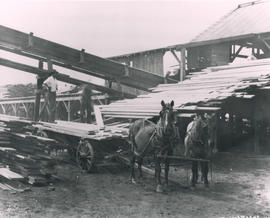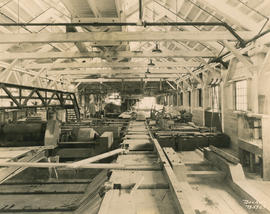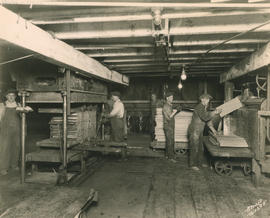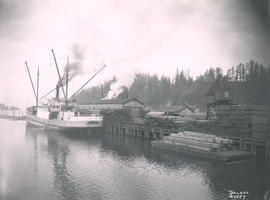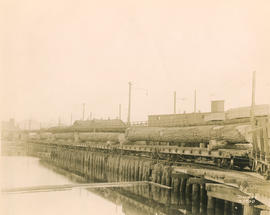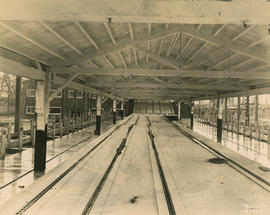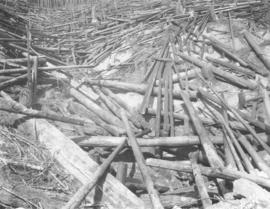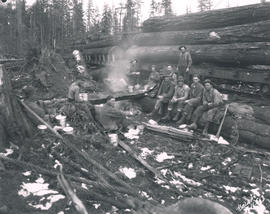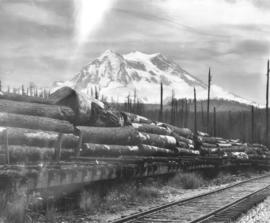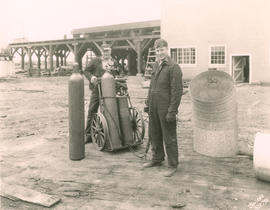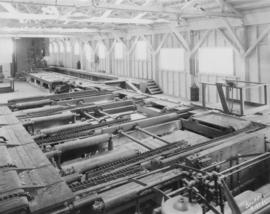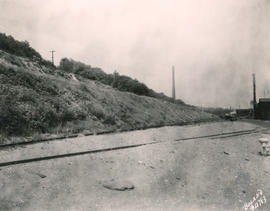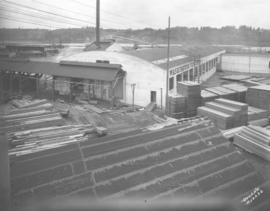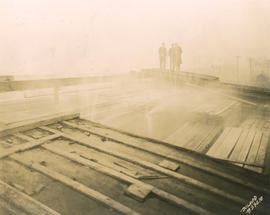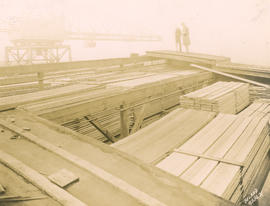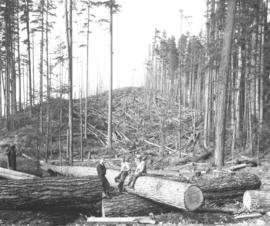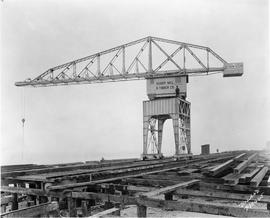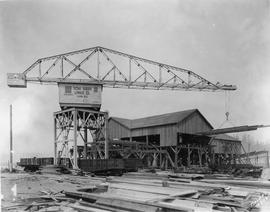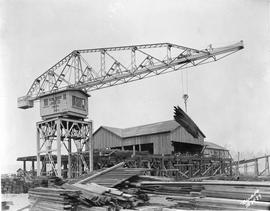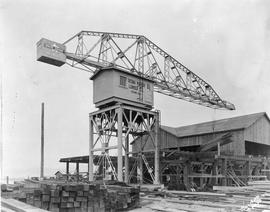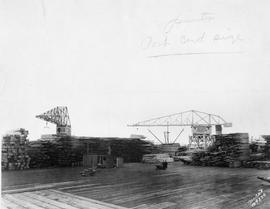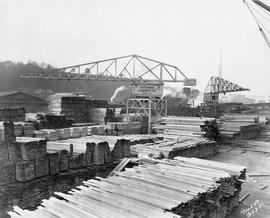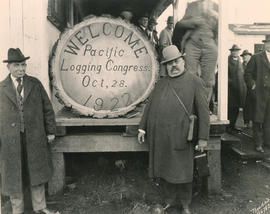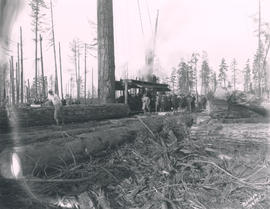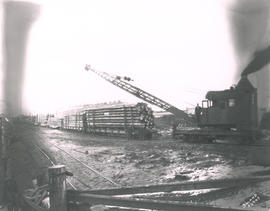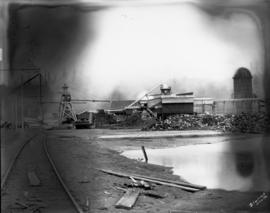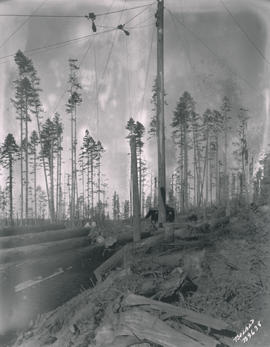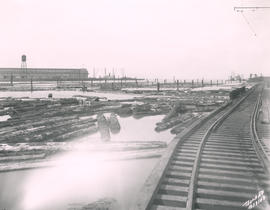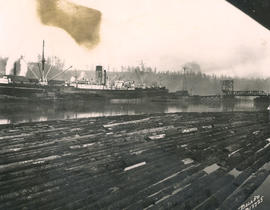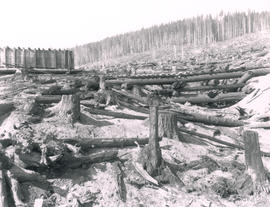The "Silksworth" was docked at the Tidewater Mill, 3901 E. 11th St., the first stop of four, on November 19, 1925. She would continue on to the Defiance Lumber on November 22nd, and then on to Dickman and St. Paul mills. The Australian-bound vessel, on her first visit to Tacoma, was under the command of Captain R. Deans. The 429-foot "Silksworth" was a relatively new ship, in operation less than three years, and had a 53-foot beam. She would be taking 4,080,000 feet of lumber to Australia, 3 million feet of which would be loaded in Tacoma. As the ship is tied up at Tidewater, numerous logs, waiting to be processed, float in the waterway. The mill, located on the east side of the Hylebos Waterway, exported most of its timber. Because of its 750 feet of deep water moorage, Tidewater Mill was capable of loading several vessels at the same time. (photograph has been damaged) (TNT 11-21-25, p. 5-article on the "Silksworth")
Tidewater Mill Co. (Tacoma); Lumber industry--Tacoma--1920-1930; Logs; Cargo ships--1920-1930; Shipping--Tacoma--1920-1930;
